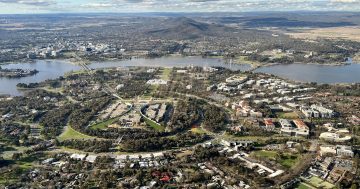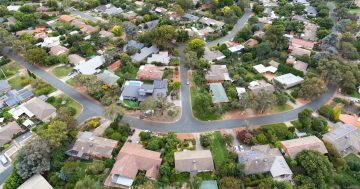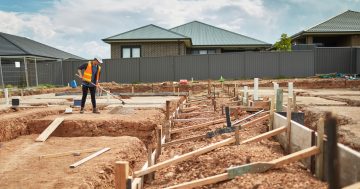
Planning Minister Mick Gentleman: the proposed amendment V369 would clarify that developments in established residential areas would need more planting space and more trees. Photo: Thomas Lucraft.
Fears that the ACT Government’s new tree rules would compromise its 30 per cent canopy target have prompted it to propose a technical amendment to the Territory Plan to clarify which residential developments are subject to new living infrastructure provisions.
The North Canberra Community Council wrote to Planning and Land Management Minister Mick Gentleman expressing its alarm at a Ministerial direction in May that it said made significant changes to approved Variation 369, which meant the new rules to maintain and increase green space in residential areas would not apply to blocks in estate developments approved after 1 January 2020.
In some cases V369, which increases urban tree canopy and permeable surfaces to 30 per cent in urban areas, would also not apply to estate developments before January 2020.
Mr Gentleman had tried to allay these concerns by saying that V369 was an interim step to ground the Living Infrastructure goals and promised that the new rules would eventually apply to all residential and commercial areas in Canberra when the new Territory Plan comes into force in early to mid-2023.
He said the changes to V369 were designed to protect people who had bought house and land packages in good faith during the boom created by government COVID-19 stimulus measures.
The council told Mr Gentleman this would be excessively restrictive and meant V369 would only apply to a very small percentage of blocks in the ACT.
Now Mr Gentleman has said that blocks in new residential estates, such as Denman Prospect, Whitlam and Ginninderry, will be temporarily exempt, and developments including knock-down and re-builds in established residential suburbs will be required to meet new living infrastructure provisions.
He said the proposed amendment V369 would clarify that developments in established residential areas would need more planting space and more trees, including blocks being subdivided or consolidated.
“It states that the living infrastructure rules apply to blocks approved under an estate development plan before 1 January 2020 or for which a lease was granted before 1 January 2020,” he said.
“Blocks purchased in new estates, including through house and land packages, on or after 1 January 2020 are exempt from having to meet the living infrastructure requirements until the new Territory Plan comes into effect in 2023.”
Mr Gentleman said the decision to temporarily exempt blocks in new estates was made out of concern for Canberrans who had purchased a house and land package in new suburbs and had already begun planning and building.
“For people who have bought a house and land package, changing designs at a late stage of the planning and building process, or even after construction had started, would result in unfair extra costs and delays,” he said.
“We were also conscious that late-stage changes to developments would further disrupt the local construction industry, which is already experiencing weather, supply chain and material cost challenges.”
Mr Gentleman said the living infrastructure rules meant the construction industry would need to adapt the way it designs new residential developments.
“We will continue to work closely with the industry and those going through the planning process to transition to the new living infrastructure standards,” he said.
“Once the new Territory Plan comes into effect in 2023, all new residential developments in the ACT will need to comply with living infrastructure requirements.
“We expect the new Territory Plan will feature a range of extra provisions for living infrastructure too, including extending the requirements to blocks in commercial zones.”
Public consultation on the proposed change is open until 18 July.





















